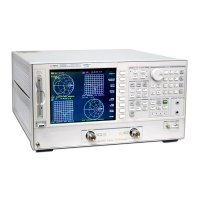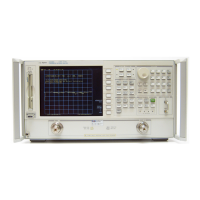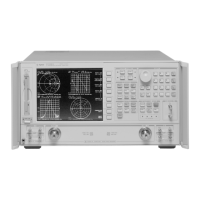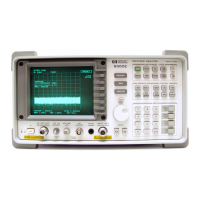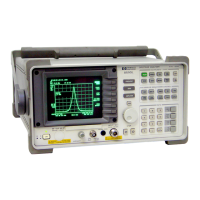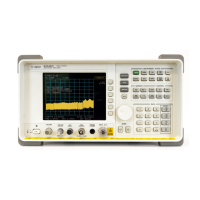Index-6
Index
making non-coaxial measurements,
6-48
fixtures, 6-48
making reflection response
measurements
, 3-9
making transmission response
measurements
, 3-5
manual mode, 7-10
manual sweep time mode, 7-12
manual thru, 6-60
margin
ripple test value, 1-92, 1-94
markers, 1-24
calculating statistics of measurement
data
, 1-43
continuous, 1-24
coupling display markers, 1-31
CW frequency, setting, 1-39
delta markers, 1-28
discrete, 1-24
display markers
activating, 1-25
fixed marker
activating, 1-29
moving marker information off of the
grids
, 1-26
polar format markers, 1-32
setting measurement parameters,
1-35
smith chart markers, 1-34
specific amplitude, searching for, 1-40
uncoupling display markers, 1-31
masking, 3-26
matched adapters, 6-45
maximum amplitude, searching for, 1-40
maximum and minimum, 1-97
maximum bandwidth, 1-97
measurement
accuracy, increasing, 5-4
calibration, power meter, 6-33
fault location using low pass, 3-18
high dynamic range, 2-23
isolation example, 2-44
non-coaxial, 6-48
plotting to a disk, 4-11
printing or plotting results, 4-3
reflection response, 3-9
results, outputting, 1-6
results, saving, 4-37
results, saving graphically, 4-44
setting, 1-5
time domain, 3-3
transmission measurements in time
domain low pass, 3-19
transmission response, 3-5
measurement calibration, 7-39
accuracy enhancement, 7-39, 7-53
characterizing microwave systematic
errors
, 7-43
measurement errors, 7-40
measurement considerations, 2-4
eliminating unwanted mixing and
leakage signals, 2-6
frequency offset mode operation, 2-10
how RF and IF are defined, 2-7
internal and external R channel inputs,
2-10
LO frequency accuracy and stability,
2-10
minimizing source and load
mismatches
, 2-4
power meter calibration, 2-12
reducing the effect of spurious
responses
, 2-5
measurement data, 1-20
dividing by the memory trace, 1-20
viewing, 1-20
measurement data trace, 1-20
subtracting memory trace, 1-20
measurement error
crosstalk, 7-42
frequency response, 7-42
isolation, 7-42
load match, 7-41
measurement errors
directivity, 7-40
source match, 7-41
measurement parameters, 1-72, 6-4
center frequency, setting, 1-36
choosing, 1-4
display reference value, setting, 1-38
electrical delay, setting, 1-39
for IF range, 2-20
frequency span, setting, 1-37
lower stopband parameters, 1-73
markers, setting with, 1-35
passband parameters, 1-73
start frequency, setting, 1-35
stop frequency, setting, 1-36
upper stopband parameters, 1-73
measurements
basic, 1-4
high power, 1-66
phase or group delay, 2-34
measuring
device under test, 1-5
gain and reverse isolation
simultaneously, 1-64
insertion phase response, 1-7, 1-8
separate transmission paths through
the test device using low pass
impulse mode
, 3-20
small signal transient response using
low pass step, 3-19
measuring amplifiers, 1-54
harmonics, measuring, 1-55
high power measurements, 1-66
measuring gain and reverse isolation
simultaneously
, 1-64
measuring gain compression, 1-60
measuring electrical length, 1-44
measuring gain compression, 1-60
linear sweep, 1-62
using linear sweep, 1-62
measuring harmonics
additional harmonic measurements,
1-57
harmonic operation, understanding,
1-58
measuring magnitude, 1-7
magnitude response, 1-7
measuring phase distortion, 1-44, 1-46
deviation from linear phase, 1-47
group delay, 1-47
memory math functions, 1-19
memory trace, 1-19, 1-20
viewing, 1-20
memory, display, 7-9
menu
address, 7-80
analog in, 7-23
calibration kit, 7-59
conversion, 7-23
edit limits, 7-83
edit segment, 7-83
input ports menu, 7-24
offset limits, 7-83
segment, 7-17
S-parameter, 7-23
stepped edit list, 7-17
stepped edit subsweep, 7-17
swept edit list, 7-18
swept edit subsweep, 7-18
microprocessor, 7-5
microwave connector care, 5-3
microwave systematic errors,
characterizing
, 7-43
minimizing
error when using adapters, 6-47
source and load mismatches, 2-4
minimum allowable stop frequencies,
3-16
minimum amplitude, searching for, 1-40
minimum bandwidth, 1-97
minimum sweep time, 7-12
mixer
fixed IF measurements, 2-26
measurement, 2-3
measurement diagram, using, 2-17,
2-23
